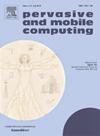Edge AIoT-based agricultural recommendation platform to improve humus productivity in vermicomposting processes
IF 3.5
3区 计算机科学
Q2 COMPUTER SCIENCE, INFORMATION SYSTEMS
引用次数: 0
Abstract
Climate change represents a critical threat to global food security, affecting agricultural production and exacerbating the food crisis projected by the FAO for 2050. Soil recovery and the adoption of sustainable agricultural practices, such as organic farming, are essential to address this challenge. Smart organic farming improves soil quality, crop productivity, and water retention capacity. In this context, vermiculture, which utilizes Eisenia Foetida (red worms), plays a fundamental role. This article highlights how humus production through vermiculture has been significantly optimized through an Edge AIoT platform that integrates an agricultural recommendation system based on bio-inspired algorithms, an LSTM network for predicting humus and worm populations, and a control system to regulate variables such as temperature, humidity, and pH. The results show an increase in humus production from 37.58% to 87.88% and in the worm population from 35.5% to 83%. Vermicompost, obtained through the non-thermophilic biodegradation of organic waste by worms, acts as a crucial biofertilizer that sustainably increases crop yields and helps farmers adapt to environmental stresses, contributing to the Sustainable Development Goals (SDGs). Finally, seven experiments were conducted in which the Edge AIoT-based agricultural recommendation platform optimized the vermicomposting process, improving efficiency and productivity in humus production. This technological approach not only mitigates the impact of climate change but also supports the recovery of degraded soils and promotes sustainable agricultural practices essential for ensuring future food security.
基于边缘物联网的农业推荐平台,提高蚯蚓堆肥过程中腐殖质的生产力
气候变化对全球粮食安全构成严重威胁,影响农业生产,加剧粮农组织预测的2050年粮食危机。土壤恢复和采用可持续农业做法,如有机农业,对于应对这一挑战至关重要。智能有机农业提高了土壤质量、作物生产力和保水能力。在这种情况下,利用红虫(Eisenia Foetida)的蚯蚓养殖发挥了根本作用。本文重点介绍了如何通过Edge AIoT平台显著优化蚯蚓养殖的腐殖质生产,该平台集成了基于生物启发算法的农业推荐系统、用于预测腐殖质和蠕虫种群的LSTM网络以及调节温度、湿度和ph等变量的控制系统。结果显示腐殖质产量从37.58%增加到87.88%,蠕虫种群从35.5%增加到83%。蚯蚓堆肥是蠕虫通过对有机废物进行非嗜热性生物降解而获得的,是一种重要的生物肥料,可持续提高作物产量,帮助农民适应环境压力,为实现可持续发展目标做出贡献。最后,进行了7项实验,通过基于Edge ai的农业推荐平台优化了蚯蚓堆肥过程,提高了腐殖质生产的效率和生产率。这种技术方法不仅减轻了气候变化的影响,而且还支持退化土壤的恢复,促进对确保未来粮食安全至关重要的可持续农业做法。
本文章由计算机程序翻译,如有差异,请以英文原文为准。
求助全文
约1分钟内获得全文
求助全文
来源期刊

Pervasive and Mobile Computing
COMPUTER SCIENCE, INFORMATION SYSTEMS-TELECOMMUNICATIONS
CiteScore
7.70
自引率
2.30%
发文量
80
审稿时长
68 days
期刊介绍:
As envisioned by Mark Weiser as early as 1991, pervasive computing systems and services have truly become integral parts of our daily lives. Tremendous developments in a multitude of technologies ranging from personalized and embedded smart devices (e.g., smartphones, sensors, wearables, IoTs, etc.) to ubiquitous connectivity, via a variety of wireless mobile communications and cognitive networking infrastructures, to advanced computing techniques (including edge, fog and cloud) and user-friendly middleware services and platforms have significantly contributed to the unprecedented advances in pervasive and mobile computing. Cutting-edge applications and paradigms have evolved, such as cyber-physical systems and smart environments (e.g., smart city, smart energy, smart transportation, smart healthcare, etc.) that also involve human in the loop through social interactions and participatory and/or mobile crowd sensing, for example. The goal of pervasive computing systems is to improve human experience and quality of life, without explicit awareness of the underlying communications and computing technologies.
The Pervasive and Mobile Computing Journal (PMC) is a high-impact, peer-reviewed technical journal that publishes high-quality scientific articles spanning theory and practice, and covering all aspects of pervasive and mobile computing and systems.
 求助内容:
求助内容: 应助结果提醒方式:
应助结果提醒方式:


